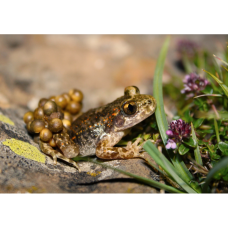Loïc Kéver du Laboratoire de Morphologie Fonctionnelle et Evolutive, Université de Liège (Belgique) sur « Sound production and electric discharges in catfishes (Production de sons et de signaux électriques chez les poissons chats). «
« There are hundreds of species of freshwater catfish in the world. Contrary to the popular belief that they all look the same, catfish present a unique diversity in size, shape, ecology, and behavior.
This is also true for their communication modes. In addition to visual and chemical communication, some species evolved social acoustic and electric signals.
This presentation will focus on the mechanisms that allow the generation of these two types of signals in catfish. We will see that some species can generate sounds using two completely independent apparatuses and that in some species the sound producing apparatus was modified to generate electric discharges. A glimpse of the morphological diversity reported for these apparatuses will also be provided. »
Ferran Sayol Evolution of biodiversity, University of Göteborg (Suède) sur « How extinctions have erased the evolutionary history of flightlessness in birds »
» While being able to fly is one of the most distinctive traits of birds, several lineages have lost this ability in some environments, such as oceanic islands. If we only consider extant species, the evolution of flightlessness appears to be extremely rare, occurring in only 58 out of more than 10000 species of birds. However, these patterns might be biased by anthropogenic impacts, especially by human-caused extinctions on islands. In this study, we aimed to infer the evolutionary history of flightlessness by recovering the total diversity of birds before human disturbance. After including more than 600 reported extinct birds to the data, we found that 230 species lost the ability of flight, which represent at least 150 independent loses in the history of birds. These findings highlight that humans, through non-random extinctions, have dramatically influenced the diversity and distribution of species and their traits, which must be taken into account when trying to understand natural macroevolutionary patterns. »
Carlos Aurelio Palancar du Museo Nacional de Ciencias Naturales, Madrid sur « Connecting skull and trunk: the cervical spine. »
« While the human skull and trunk have been largely studied during the last decades, the cervical spine has been underlooked until so recently. Even so, the cervical spine is of great importance in the understanding of the head-neck posture, the locomotor pattern and even the speaking, breathing and feeding skills. Besides, we already know it is a variable structure, presenting different internal architecture and 2D shape during ontogeny, between sexes, species and populations. The goal of this presentation is to lay out a thesis project in which 3D geometric morphometrics will be applied to the study of the hominin cervical spine and its shape variation due to ontogeny, sexual dimorphism, origin and evolution. »





